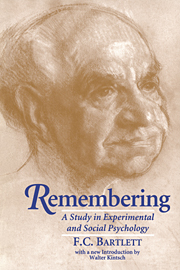Preface
Published online by Cambridge University Press: 04 August 2010
Summary
On a brilliant afternoon in May 1913 the present Laboratory of Experimental Psychology in the University of Cambridge was formally opened. Dr C. S. Myers, the founder and, at that time, the Director of the Laboratory, invited me to take part in the Demonstrations which he had arranged. Accordingly, for several hours, I sat in a darkened room exposing geometrical forms, pictures and various optical illusions to the brief examination of a long string of visitors. That was the beginning of the present book. The interpretations by my observers of the figures which were placed before them were as various as they were attractive. It was clear that the course of normal visual perception may be determined by a very large number of different factors. It seemed probable that a carefully arranged experimental study might serve to disentangle many of these factors and to demonstrate their functions.
Encouraged by others, I set to work at once. But it very speedily became evident that an examination of normal perceptual process leads directly and inevitably to an investigation of related mental processes, and in particular to a study of imagery and of recall.
Long before this, Ebbinghaus had introduced the ‘exact methods’ of nonsense syllables into the Laboratory consideration of memory. As in duty bound, I followed his lead and worked for some time with nonsense material. The result was disappointment and a growing dissatisfaction.
- Type
- Chapter
- Information
- RememberingA Study in Experimental and Social Psychology, pp. xvii - xxPublisher: Cambridge University PressPrint publication year: 1995



